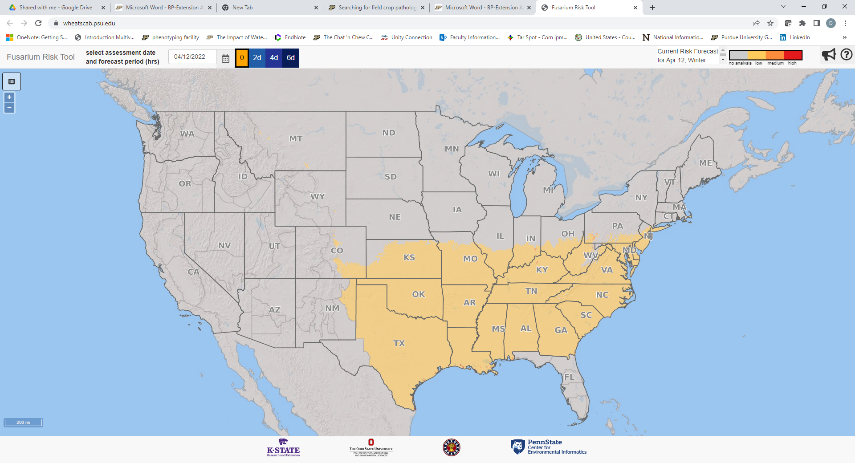Armyworm Pheromone Trap Report – 2022
Armyworm Pheromone Trap Report – 2022

Perennial cool-season grass/legume pastures broke winter dormancy several weeks ago.

Support from the SCN Coalition and National Soybean Board will continue to provide FREE soybean cyst nematode (SCN) soil testing this spring to Indiana growers. If you have trouble fields that you have not had a recent SCN test please consider sending in a soil sample to test for SCN. This program will support one sample per Indiana farm to be submitted to the SCN Diagnostics at the University of Missouri. Please print off a form here https://ag.purdue.edu/btny/ppdl/Documents/PPDL-3-W%20SCN%20Survey-MO.pdf to include with your soil sample. Additional samples will cost $25/each. Pack the samples in a box and cushion the samples with packing material so the bags don’t break open during shipping. Ship to: SCN Diagnostics 1054 East Campus Loop University of Missouri Columbia, MO 65211-5315 To soil sampling for SCN The equipment you need for sampling soil for soybean cyst nematode (SCN) is the same equipment you use for taking a[Read More…]
MULTI–YEAR SUMMARY OF CORN RESPONSE TO NITROGEN FERTILIZER This report summarizes corn yield response to fertilizer nitrogen (N) rate in field–scale trials conducted around the state of Indiana since 2006. These results are applicable to N management programs that use efficient methods and timings of N fertilizer application. The Agronomic Optimum N Rate (AONR) represents the total amount of fertilizer N (including starter N) required to maximize yield, but not necessarily profit. The AONR in these trials varied among regions of the state from about 211 to 254 lbs N / ac, depending partly on soil organic matter and soil drainage characteristics. At five Purdue Ag. Centers where we conducted paired trials of corn following soybean (corn/soy) and corn following corn (corn/corn) from 2007 to 2010, the average AONR for corn/corn was 44 lbs greater than for corn/soy while average corn/corn yields were 18 bu / ac less than the[Read More…]

Corn yield response to increasing nitrogen (N) rate follows the Law of Diminishing Returns – as higher and higher increments of N are applied, the increase in grain yield becomes smaller and smaller (Figure 1). Eventually, maximum yield occurs and applying more N does not increase yield any further.

There are a few resources available for monitoring field crop diseases here in Indiana.
2022 Black Cutworm Pheromone Trap Report Form
The “Black Cutworm Adult Pheromone Trap Report,” below, features moth captures that are mostly low, with a few surprises.

Have you ever seeded a pasture or hay field and still have seed in the back of your pickup truck or trailer that was meant to be in the soil upon completion of the seeding?

Please join us for a six-part webinar series focused on integrated pest management in hemp!
© 2024 Purdue University | An equal access/equal opportunity university | Copyright Complaints | Maintained by Pest&Crop newsletter
If you have trouble accessing this page because of a disability, please contact Pest&Crop newsletter at luck@purdue.edu.